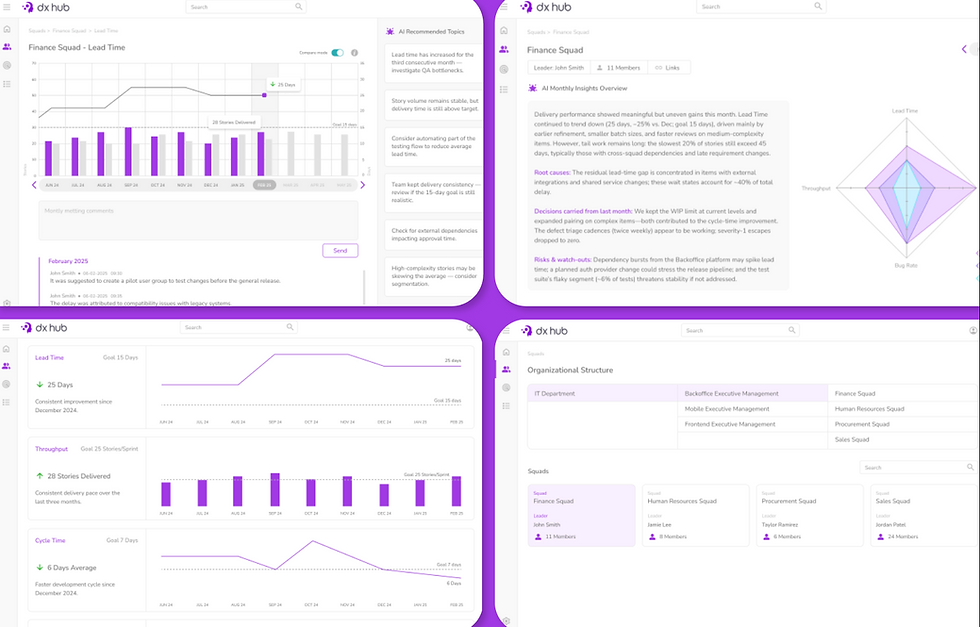Why Is Software Delivery Speed Crucial For Business?
- Avalia

- Jun 29, 2022
- 4 min read
Updated: Jun 19, 2023
“If it takes you longer to deliver to your customers or to take your product to market, you stand to lose customers, revenue, and market positioning,” said Mauricio Bento, Avalia Business Director.
“Software delivery speed loss (or lack of performance) can be traced back to several factors in the technology, processes, and people. Identifying the causes is critical, because it can result in a number of other losses that dramatically impact business.
The big one is timing: if it takes you longer to deliver to your customers or to take your product to market, you stand to lose customers, revenue, and market positioning (cost of opportunity).
From a technical point of view, a loss in delivery speed can originate from a framework that’s not best suited to the company, technology, or processes; from the use of outdated or incomplete technology; or from a lack of knowledge about the cloud solution being used and/or how to extract the best results from it.
The processes to manage product plans and development can also be a big source of delivery speed loss. Specifically, the application of the processes by the team, their complexity in relation to the size of the company or project, or a lack of processes or indicators can all instigate delivery speed losses. Avalia has several development indicators for processes that can help increase a team’s performance and delivery speed. Another important element to consider in software delivery speed is the culture of the company or team.
Finally, a lack of performance can be traced back to people. They may have a problem of focus (quality vs. speed, new features vs. technical debt, or product A vs. product B, for example) or a lack of training, motivation and/or management, all of which would negatively impact the software delivery speed.
To identify the causes of speed loss and to find the right solutions, it takes a thorough tech due diligence that covers the technology, processes, and people in depth. Every company has issues, so the key to maximizing an investment’s chances of success is knowing what the issues are and what needs to be done to fix them beforehand.”
Watch our video illustrating the profound impact software delivery speed can have on three key business areas of costs, revenue, and enterprise value. Or, read the case here.
What do we mean by ‘speed’?
Olivier Liechti, Avalia Co-Founder and CTO, highlights: “It is important to define what 'speed' means in the context of software development, and how it can be measured. This is not a trivial question.”
“There are a lot of metrics that provide a partial answer to the question, but they have to be analyzed carefully. Otherwise, the risk is to focus on outputs rather than outcomes. Counting lines of code, user stories, or releases gives a sense of activity, but not necessarily of movement.
Speed is distance over time. But what is distance then? In software development, I would say that it is how far you are from fulfilling your users needs. Software delivery ‘feels’ fast when you clearly understand these needs and make steady, concrete steps to address them. At the end of the day, it is user feedback that gives you a real sense of speed.
Software delivery speed is important, because it feeds into a virtuous cycle. Teams who are ‘in the zone’ have found a way to improve their software at a steady pace. They have found a good balance between the time spent on new features and the time spent on taking care of the software structure. In these teams, satisfaction and motivation are high, which translate into sustainable quality work.
What I find fascinating is working with teams who feel ‘stuck’ and helping them recover speed. After assessing the root causes, the most important is to ‘get started’ and to make progress visible. The first victories boost motivation and can actually change sentiment quickly. This is the kind of very concrete ‘transformation’ that I love to be part of.”
What could slow down a team’s software delivery speed?
“A high developer churn rate can disrupt a team’s software delivery speed”, said Guillaume Serneels, Avalia Software and Data Engineer.
“The churn rate expresses the level of turnover in a team. It’s determined by comparing the number of developers who have left and the number who have been onboarded with the total number of developers within a defined period.
For a team, a high churn rate often induces a loss of knowledge regarding the code base, excessive time spent onboarding new members, as well as a deterioration of collaborative practices and synergies between developers. All of these factors can have varying negative influences on the speed of software delivery, in turn affecting the business relying on it.
Developer churn rate is one of the metrics leveraged by Avalia’s automated tooling platform when conducting data-driven Software Due Diligence.”
Discover eight causes of slower software delivery speed and how investors can help.
At Avalia, our goal is to improve the positive impact of every investment made in software.
This is why we take a holistic approach to Software Due Diligence - to go beyond risk mitigation into value creation.
How do we do that? By delivering data-backed insights into an organisation’s on-the-ground reality and connecting the dots between the business and technology to produce a roadmap of recommended actions to get you where you want to go.
Ready to talk about how we can help you mitigate risk and create value in your next investment?


